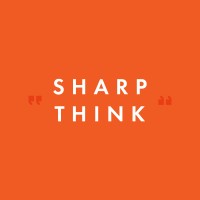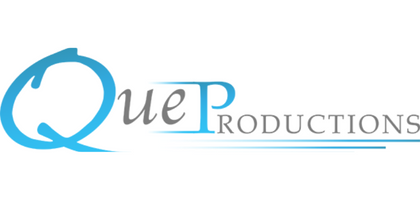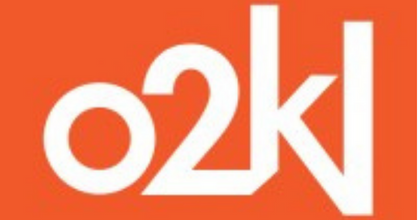
Top Restaurant Software Development Companies
Welcome to our comprehensive guide to the top Restaurant Software Development Companies! In today’s competitive restaurant industry, technology plays a vital role in enhancing efficiency, optimizing operations, and delivering exceptional customer experiences. Our curated list features the leading companies specializing in developing innovative software solutions tailored specifically for restaurants. From point-of-sale (POS) systems and online ordering platforms to table management and inventory management software, these companies offer a diverse range of products and services to meet the unique needs of restaurant owners and operators. With detailed reviews and insights, we empower you to make informed decisions and choose the best partner for your restaurant’s success.
List of the Best Restaurant Software Development Companies

-
Employees: 51 to 200
-
Min. Project amount: $ 25000
-
Country: USA

Lime Creative
-
Employees: 2 to 10
-
Min. Project amount: $ 25000
-
Country: USA

Sharp Think
-
Employees: 11 to 50
-
Min. Project amount: $ 25000
-
Country: USA

420MEDIA
-
Employees: 2 to 10
-
Min. Project amount: $ 25000
-
Country: USA

QUE Productions
-
Employees: 2 to 10
-
Min. Project amount: $ 25000
-
Country: USA

The Sevenfold Studio
-
Min. Project amount: $ 25
-
Country: USA

Blackbird Digital
-
Employees: 2 to 10
-
Min. Project amount: $25000
-
Country: U.S.A

VIP Social
-
Employees: 2 to 10
-
Min. Project amount: $ 25000
-
Country: USA

Flywheel Film
-
Employees: 2 to 10
-
Min. Project amount: $ 25000
-
Country: USA

o2kl
-
Employees: 11 to 50
-
Min. Project amount: $ 25000
-
Country: USA
** Buyer's Guide **
- 1. What are the key features I should look for in restaurant software solutions?
- 2. Can restaurant software solutions accommodate different types of restaurants, such as fine dining, fast casual, or quick-service establishments?
- 3. How secure are restaurant software solutions in terms of handling customer data and payment information?
- 4. Can restaurant software solutions help improve operational efficiency and reduce costs?
1.What are the key features I should look for in restaurant software solutions?
Key features to consider include point-of-sale (POS) functionality, online ordering capabilities, table and reservation management, inventory tracking, employee scheduling, reporting and analytics, and integrations with other tools like payment processors and accounting software.
Let’s delve deeper to understand how they can benefit your restaurant and what additional features you might consider:
Must-Have Features for a Thriving Restaurant:
Point-of-Sale (POS) System: The cornerstone of any restaurant operation, a robust POS system streamlines order processing, manages customer payments, tracks sales data, and integrates with other functionalities for seamless operations.
Online Ordering: In today’s digital world, convenience is key. Online ordering allows customers to browse menus, place orders for pickup or delivery, and pay securely, increasing accessibility and sales.
Table and Reservation Management: For restaurants with limited seating or a focus on reservations, efficient table management software optimizes seating arrangements, waitlists, and reservations to ensure a smooth dining experience.
Inventory Tracking: Say goodbye to stockouts and wasted food. Inventory management systems track ingredient levels, manage ordering processes, and optimize stock based on sales data and historical trends, saving you money and ensuring menu availability.
Enhancing Operations and Customer Experience:
Employee Scheduling: Streamline staff scheduling with dedicated software. Create schedules, track employee hours, and manage communication, optimizing labor costs and staff efficiency.
Reporting and Analytics: Gain valuable insights into your business performance with reporting and analytics tools. Analyze sales trends, identify peak hours, track customer preferences, and make data-driven decisions to optimize your menu, pricing, and marketing strategies.
Integrations: Seamless integrations with third-party tools like payment processors, accounting software, loyalty programs, and marketing platforms can significantly improve operational efficiency and eliminate manual data entry.
Additional Features to Consider:
Kitchen Display System (KDS): Improve kitchen efficiency and communication. KDS displays real-time order queues, tracks cook times, and minimizes errors, leading to faster service and happier customers.
Customer Relationship Management (CRM): Build stronger customer relationships! CRM systems help manage customer data, personalize marketing efforts, and track loyalty programs, fostering customer engagement and repeat business.
Menu Management: Easily update your menu offerings with user-friendly menu management tools. Add descriptions, photos, and manage pricing changes efficiently.
By prioritizing these key features and considering additional functionalities that cater to your specific needs, you can select restaurant software that empowers your business to thrive in the competitive culinary landscape.
2.Can restaurant software solutions accommodate different types of restaurants, such as fine dining, fast casual, or quick-service establishments?
Yes, many restaurant software development companies offer solutions that are customizable and adaptable to various restaurant types and sizes. Look for companies that offer flexible configurations to meet the specific needs of your restaurant concept.
Restaurant software solutions are designed to cater to diverse restaurant types. Here’s how these solutions adapt to different dining experiences:
One Size Doesn’t Fit All: Tailoring Restaurant Software to Your Concept
The beauty of modern restaurant software lies in its versatility. While core functionalities like POS systems and inventory management are essential for all restaurants, the specific features and configurations can be adapted to suit the unique needs of fine dining, fast casual, or quick-service establishments:
Fine Dining:
- Advanced Menu Management: Showcase your culinary creations with detailed menu descriptions, ingredient listings, and the ability to manage multiple course options and price variations.
- Table Management and Reservations: Accommodate reservations with flexible seating arrangements and table management functionalities to ensure a seamless fine-dining experience.
- Wine List Management: For establishments with extensive wine selections, software can integrate with inventory management to track stock levels and pair wines with specific menu items.
Fast Casual:
- Order Kiosks and Self-Service Options: Streamline ordering with self-service kiosks or mobile ordering apps. Integrate these features with your POS system for efficient order processing.
- Kitchen Display Systems (KDS): Ensure accuracy and speed in fast-paced environments. KDS displays real-time order queues, optimizes order flow, and minimizes preparation times.
- Delivery Management: If your fast-casual restaurant offers delivery, integrate your software with delivery platforms to streamline order routing and dispatch processes.
Quick-Service:
- Drive-Thru Integration: Optimize drive-thru operations with software specifically designed for quick order processing and payment collection.
- Digital Menu Boards: Enhance customer experience with digital menu boards that display menu items, pricing, and combo options clearly.
- Loyalty Programs: Build customer loyalty with integrated loyalty programs that track purchases and reward repeat customers.
Finding the Perfect Fit:
- Identify Your Needs: Before exploring software options, clearly define your restaurant concept and specific needs. Are you a fine-dining establishment prioritizing table management and menu customization? Or a fast-casual restaurant requiring efficient order processing and self-service options?
- Customization is Key: Look for restaurant software development companies that offer customizable solutions. Many software packages have modular components allowing you to choose functionalities that directly address your restaurant type’s needs.
- Industry-Specific Features: Some companies cater specifically to certain restaurant types. Explore software designed for fine dining or quick-service establishments, as they might offer pre-configured features tailored to your specific operational needs.
By understanding how restaurant software adapts to different dining styles and by prioritizing features that align with your unique concept, you can select a solution that optimizes your operations, enhances customer experience, and empowers your restaurant to flourish.
3.How secure are restaurant software solutions in terms of handling customer data and payment information?
Reputable restaurant software development companies prioritize data security and compliance with industry standards. Ensure that the software provider implements robust security measures like encryption, access controls, and regular security updates to protect sensitive information.
Data security is paramount in the restaurant industry, where customer information and payment details are handled daily. Here’s how to ensure the restaurant software you choose prioritizes security:
Fort Knox for Foodies: Unveiling Security Measures in Restaurant Software
Customer trust is vital for any restaurant. In today’s digital age, that trust extends to safeguarding their data. Here’s what to look for in restaurant software solutions to ensure robust data security:
Encryption Standards: Reputable software providers encrypt data at rest (stored on servers) and in transit (traveling between your system and theirs) using strong encryption algorithms like AES-256. This renders data unreadable even if intercepted by unauthorized parties.
Access Controls: Watertight access controls are essential. Look for software that employs multi-factor authentication (MFA) for user logins, requiring additional verification factors beyond passwords to prevent unauthorized access. Additionally, role-based access controls (RBAC) should be implemented, granting users access only to the data and functionalities they need for their specific roles.
Regular Security Audits and Updates: Just like updating your phone’s operating system, software requires regular security updates to patch vulnerabilities and address potential security risks. Choose a provider with a commitment to ongoing security audits and prompt deployment of software updates.
Compliance with Industry Standards: Look for software solutions that adhere to industry security standards relevant to the type of data they handle. For example, PCI DSS compliance is essential for safeguarding payment card data.
Data Backup and Disaster Recovery: In the event of unforeseen circumstances, ensure the software provider has robust data backup and disaster recovery plans in place. Regular backups ensure you can restore critical data in case of system failures, and disaster recovery plans outline procedures to minimize downtime and restore full functionality.
Security is a Shared Responsibility:
- Partnering for Protection: While software providers implement security measures, it’s crucial for restaurants to take responsibility as well. Educate staff on secure password practices and data handling procedures. Regularly review user access controls and be vigilant about any suspicious activity.
By prioritizing data security and choosing a software provider with a robust security posture, you can ensure your restaurant protects customer information, maintains trust, and avoids potential data breaches. Look for companies that are transparent about their security practices and can provide detailed information on their security measures.
4.Can restaurant software solutions help improve operational efficiency and reduce costs?
Yes, restaurant software solutions are designed to streamline operations, automate repetitive tasks, and optimize workflows, leading to improved efficiency and cost savings. Look for features like automated inventory management, labor scheduling, and reporting tools that can help identify areas for improvement.
Restaurant software solutions are powerhouses for optimizing efficiency and reducing costs. Here’s how these solutions translate to real financial benefits for your restaurant:
Trimming the Fat: How Restaurant Software Saves Time and Money
The fast-paced world of restaurants demands efficiency. Restaurant software solutions can significantly improve operational efficiency and reduce costs in several ways:
Streamlined Operations: Say goodbye to manual processes and repetitive tasks. Software automates functions like order processing, inventory tracking, and table management, freeing up your staff’s time to focus on customer service.
Reduced Labor Costs: Automated scheduling tools help you create optimized staff schedules based on sales data and historical trends. This ensures you have the right number of staff on hand during peak hours and minimizes labor costs during slower periods.
Inventory Management Made Easy: Stop wasting money on overstocked or under-stocked ingredients. Inventory management software tracks ingredient levels, automates reordering processes, and optimizes stock based on sales data. This reduces shrinkage (lost or wasted inventory) and ensures you always have the necessary ingredients on hand.
Real-Time Reporting and Analytics: Gain valuable insights into your business performance with comprehensive reporting and analytics tools. Identify areas for improvement, such as peak and slow hours, menu item popularity, and staff performance. Use this data to make data-driven decisions that optimize your menu pricing, marketing strategies, and overall operations.
Reduced Food Waste: Improved inventory management and sales forecasting capabilities lead to less food waste. This translates directly to cost savings and a more sustainable operation.
Additional Features for Cost Savings:
Employee Training: Some software solutions offer built-in training modules or integrate with online learning platforms. This reduces the time and resources needed to train new staff, minimizing onboarding costs.
Integration with Accounting Software: Seamless integrations with accounting software eliminate manual data entry errors and streamline financial processes, saving time and money.
Vendor Management: Software can help manage vendor relationships and track purchase orders. This allows you to negotiate better prices with suppliers and optimize your purchasing strategies.
By leveraging the functionalities of restaurant software solutions, you can streamline operations, tighten controls, and make data-driven decisions that lead to improved efficiency, reduced costs, and ultimately, a more profitable restaurant business.



